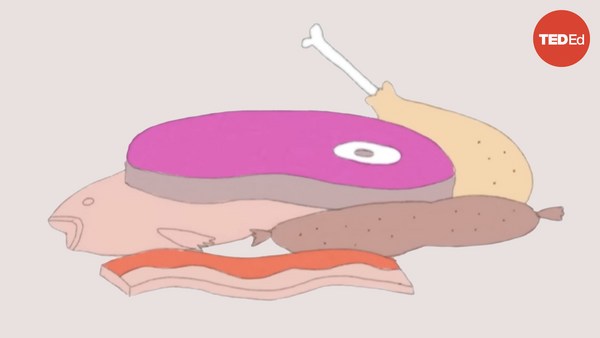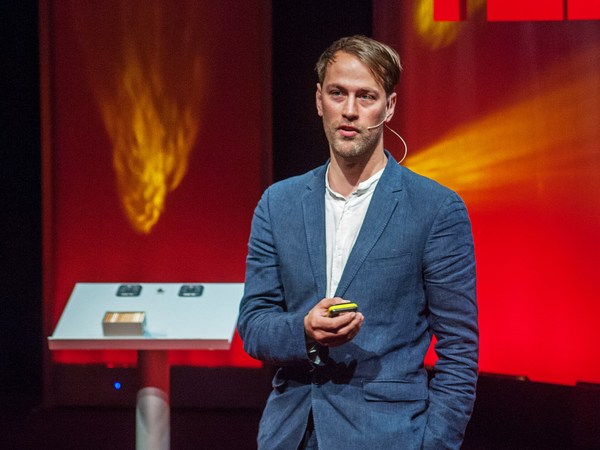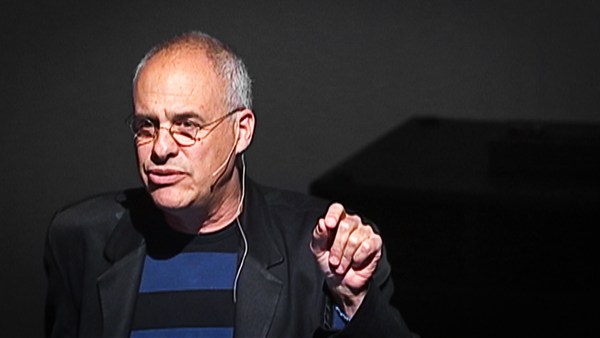Today, nearly one in 10 is food insufficient. That number has been rising every year since 2014, and it's forecast to become considerably worse over the next two to three decades. This is especially true for the poorer countries of Africa and Asia, where the rise in demand is outpacing the rise in our ability to supply.
I want to tell you how the most important process on the planet, boosting that process, photosynthesis, could alleviate this problem.
How photosynthesis works is that plants remove carbon dioxide from the atmosphere, then they use sunlight energy to convert that into our food, releasing our oxygen at the same time.
Photosynthesis is the most studied of all plant processes, and from that knowledge, we realize that even our most productive crops are only achieving about one fifth of the potential efficiency of that process. As the most studied of plant processes, we realize that the efficiency is low.
Now, if we look at other genetic improvements of plants, these have typically involved one or two genes, for example, the shortening of the stems of rice and wheat, allowing more of the plant's biomass to go into the grain that we harvest, was at the core of the Green Revolution. That involved mutations in just a few genes. But photosynthesis is a process of over 100 steps, each of these facilitated by a different protein and in turn coded for by many genes.
So where do you start? Well, you can envisage this like a car production line. Imagine you've got a thousand workers. Where do you place them on your line to get the most output? Similarly, if you consider the amount of protein in a leaf, how do you distribute that between all these steps to get the maximum efficiency? If you could work that out, then maybe you could make progress.
However, to do this experimentally with all these permutations may take decades. So instead, we built a digital twin of the process in which every one of these reactions was described by a differential equation producing a system that we could then numerically integrate and optimize to pick out where should we be making changes. So after three years of building this system, we are now ready to do our numerical integration. And it failed. It failed miserably.
(Laughter)
Fortunately, another scientist at our computer center heard us talking about our problems and said, "Oh, I had exactly the same problem with my work on balancing rocket motors, and here's how I solved it." So he looked at our problem and he said, "Oh, this is more challenging than what I'm doing." And he worked with us. And using his methods, we were now able to numerically integrate our system, and we could optimize that, and we could start to see places where we might be able to improve photosynthesis. So that's just to tell you that photosynthesis isn't rocket science. It's harder.
(Laughter)
(Applause)
Well, of course, models can look very attractive. But when you now have to go into a muddy crop field to show that you can actually do this, it doesn't look quite so pretty. But despite these challenges, we were able to get together a team of experts from Australia, Britain, China and the United States to work together on this. And this is how we work. We use this digital twin to say, well, what is the easiest change we might make that would have a big impact? Then we engineer that into a crop. If in the greenhouse, we can see that the genetically modified plant is yielding more than the unmodified one, then we have the acid test saying, does this actually provide a higher yield on our experimental farm?
Now we've now made three different changes to photosynthesis, each individually increasing yield by over 20 percent. And I'll just tell you about --
(Applause)
A couple of these in a little more detail.
In one case, the digital twin said a protein we call SBPase should be far more abundant in the leaf than it is. So we put in extra copies of the genes coding for that protein. We made more of it, we got more photosynthesis, we got a higher yield. Well, this was a bit of a mystery because ... This protein is a tiny fraction of the leaf's total protein. So why hadn’t evolution already done this?
A colleague pointed out to us that the ancestors of our crops evolved in the carbon dioxide concentration that is about half what it is today. Aha! So we reran the model at this past CO2 concentration, and we found now that the model was saying well you don't need any more of this protein. So then we got curious, what about the future? In 2050, we're predicting a considerably higher carbon dioxide concentration. When we ran it at that higher concentration, it said the benefit of increasing this protein was even greater. Well, we couldn't easily remove carbon dioxide from the air around our crop, but we could add it. And when we did this, the model prediction was proved that we did indeed get an even bigger boost in yield. So this told us that evolution has just not had time to keep pace with the changes we have made in crop environments.
Now, another change we've made in crop environments is to grow our crops at ever-increasing densities. This means that there's a lot of shading within the crop. So over the course of a day, the leaves are going in and out of shade due to clouds, due to the passage of the sun across the sky, but most importantly, shadows cast by other leaves. Now, for photosynthesis, when the leaf goes into the shade, it's rather like you coming out of the sunshine, going into the shade of a room, and it takes time for your eyes to adjust to that change. The same is true of photosynthesis, except it adjusts rather more slowly than your eyes. Over the course of the day, this slow adjustment costs productivity an estimated 20 to 40 percent. So again, using our digital twin and also other information, we identified three proteins that we should regulate. So we added extra copies of the genes for those proteins, got more of them, the leaves adapted faster to fluctuations in light. And in soybean on our farm we got more than 20 percent increase in seed yield.
(Applause)
So how do we now get from these improvements to seed which will give greater yields where it is most needed? And I'll just give you one ongoing example.
We've been working with TJ Higgins, a plant biotechnologist from Australia, who's been working in Nigeria really for almost 20 years, developing insect-resistant cowpea. Cowpea is probably not what you think it is. Cowpea is actually a nitrogen-fixing crop related to soybean, and it produces, like soybean, a protein-rich seed. It is, in fact the most important vegetable protein source in West Africa, and it is often referred to as the “poor man’s meat.” A problem with cowpea is that a pod boring insect can completely destroy a family's entire crop. So TJ's ... genetically modified cowpea that is insect-resistant is very powerful, and TJ and his colleagues work with governments in West Africa to put in place regulatory frameworks for genetically modified crops. And now this insect-resistant cowpea is available to farmers in Nigeria, where it's become very popular. This year, it was also released in Ghana. So what we are now doing with TJ is stacking our photosynthetic improvements on top of his insect resistance -- this is all royalty-free -- so that these farmers will have access to seed, which will produce a crop which is insect-resistant and delivers a higher yield.
So I hope I've shown to you that ... by boosting photosynthesis we can relieve the risk of food insufficiency for some of the most vulnerable. We can protect the environment by preventing the need to go onto yet more land to produce our food. And the possibility that we might even be able to remove carbon dioxide from the atmosphere. A 21-century Green Revolution, one we so urgently need.
Thank you.
(Applause)





